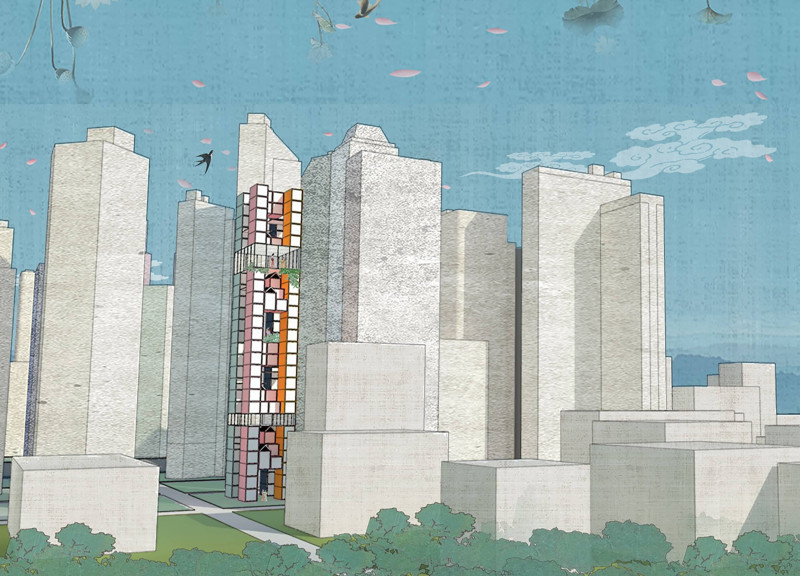5 key facts about this project
The design around London Bridge focuses on the need for affordable housing within the urban context of Waterloo Station. The location serves as an important transportation hub. The project aims to enhance community connections and promote sustainable living in an area that feels increasingly crowded. The central concept revolves around using neglected spaces in the city to create a vibrant environment that meets the diverse needs of its residents.
Concept and Functionality
The proposal makes use of Urban Negative Space, specifically targeting areas under existing railway structures that are often overlooked. By adapting these spaces into a linear complex, housing units are positioned above the railway. This design ensures that residents can enjoy vibrant activities and amenities at street level while maximizing the use of available land.
Community Integration
Key to the design is the inclusion of various community elements such as coffee shops, street markets, libraries, and greenhouses. These amenities foster social interactions and help to build a sense of community among residents. The design also features vertical transportation systems, like lifts and escalators, which facilitate easy movement between elevated housing units and the lively public spaces below.
Sustainability and Green Spaces
The design places importance on ecological considerations through the addition of a sky garden. This green space enhances residents' overall experience while supporting biodiversity in the urban environment. The sky garden serves not only as a recreational area but also as a natural habitat, reflecting a commitment to environmentally friendly living practices.
The overall vision addresses the urgent need for affordable housing in London. The modular living units are adaptable to various family structures, ensuring that the design accommodates a wide range of residents. Thoughtful elements create a balance between comfort and accessibility. The combination of community-focused areas with elevated housing results in a living environment that is connected and responsive to the needs of its inhabitants. The careful integration of these features shapes a cohesive urban setting that invites engagement and interaction among residents.



























